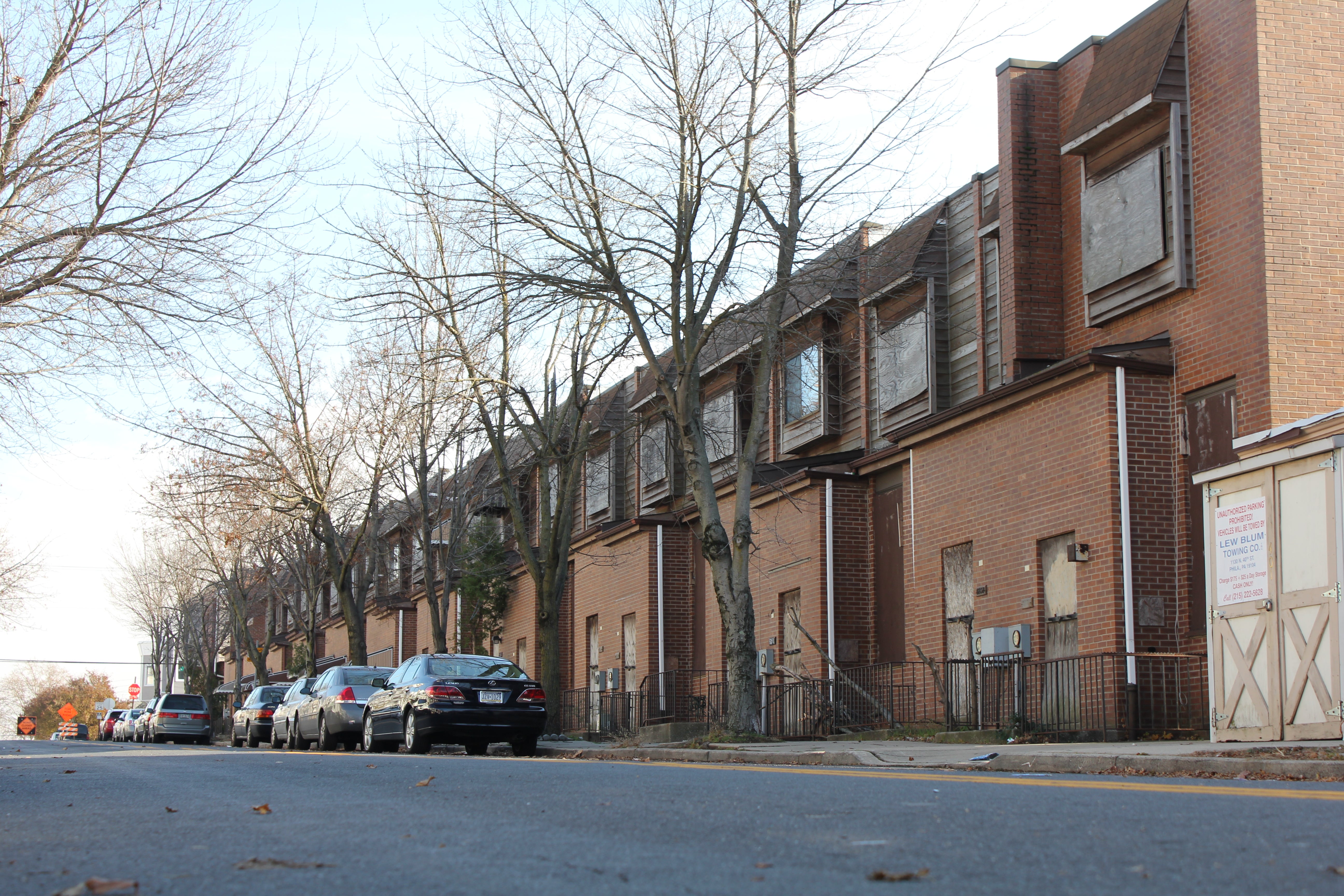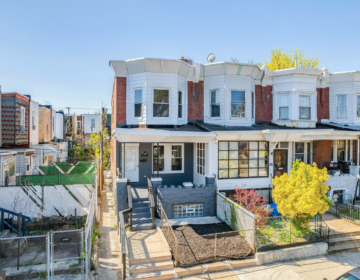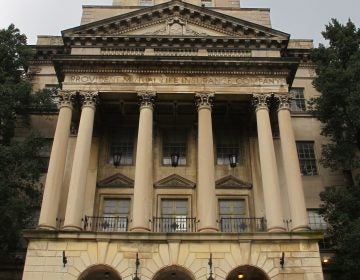Developers picked to rebuild at MOVE site face wary neighbors at project kickoff

Thirty-two years ago, the City of Philadelphia bombed itself. When it rebuilt the 6200 blocks of Osage and Pine, the developer hired to fix the mess used shoddy materials, and went to jail for theft of city money.
This week, more than three decades after the police set the Cobbs Creek neighborhood on fire, the neighbors met the men who promise to rebuild their neighborhood—again.
In 2016, the Redevelopment Authority issued a Request for Proposals to redevelop 36 vacant city-owned homes on Osage Avenue and Pine Street, which the old contractor had so badly bungled. Last week the Redevelopment Authority announced the winning bidder is AJR Endeavors, a team of three men—Anthony Fullard, James Robertson, and Rodney Ross—who have taken on the task of healing the physical scar of the 1985 bombing of the MOVE compound.
The task is herculean, the developers recognize, and not just because of the dilapidated state of the vacant rowhouses they’ll be rehabilitating. Community members made the emotional import of the project very clear at an introductory meeting organized by District Councilwoman Jannie Blackwell.
“What’s happening in North Dakota what’s going on with historical land there, well this is historical lands with us,” said Malik Johnson, president of the Cobbs Creek Advisory Council. “I understand developers have to make money. That’s your job, but this is not about money. For us it’s about we live here, we were born here, our parents died here, some of our kids died here. Its intangible. It’s about the whole working of the heart.”
The three developers sat at the front of the room and fielded emotional testimony from near neighbors and community representatives from across West Philadelphia. The atmosphere remained civil throughout, although emotions boiled over periodically and there were many interjections when the crowd felt that city officials or developers were not remembering events correctly.
The three men explained their interest in the project and established themselves as longtime Philadelphians. Fullard is the oldest and most experienced, with 20 years in construction, Robertson’s works with OCF Realty in South Philadelphia, and Ross is from West Philadelphia and sells homes all over the area.
The three developers have been interested in the houses on Osage and Pine since before the Redevelopment Authority solicited for redevelopment proposals. On drives around West Philadelphia Robertson, who is the only white member of the team, kept noticing the boarded-up houses. Born the same year as the MOVE bombing, he wasn’t aware of the history but thought that they looked like an obvious nuisance to their neighbors and a blight on a neighborhood where vacancy of such scale is unusual.
After Fullard explained the backstory to Robertson, the three men started asking around about the houses—unaware that the RFP was about to drop. They were there when the Redevelopment Authority showed the houses to potential buyers in December, as the line stretched around the block. But when the time for bidding came, they were one of only two contenders—even though the 36 houses are being sold for only a dollar a piece.
“I have done the math on this before we sent it [the RFP] out and no one is making a lot of money on this,” said Greg Heller, director of the Redevelopment Authority. “Only two people were even interested. I just want to put that out there. These guys are doing this, and they aren’t trying to lose money, but they are trying to be good citizens of Philadelphia too.”
In an interview with PlanPhilly at their offices the next day, Fullard and Ross described their intention to rehab the buildings and sell them for $175,000 to $200,000 apiece. That’s on the higher end for the neighborhood, but nothing close to the sales prices in the hotter markets in Center City-adjacent neighborhoods. With the ten-year property tax abatement in place, the mortgages could be close to $1,000 a month.
“We all have a lot of faith in West Philadelphia,” said Ross, who will be the point person for the organization.
Ross says that the team only saw four of the houses, but that they all appear to be structurally sound. Two were covered in mold, however, and the poor-quality exterior materials have failed over time.
The foundations of the burnt houses are still in place and they are built to support heavier structures of stone and brick. That should give the developers more options in terms of building materials.
The residents at the community meeting were more concerned about construction start times, how the street itself would be affected, and whether the project would be marketed to renters. Both Heller, of the Redevelopment Authority, and Ross repeatedly assured them that the rehabilitated units would only be for homeowners.
Councilwoman Blackwell sat through the entire community meeting, but only weighed in at the very beginning and the very end. She recalled that her husband, Lucien Blackwell, had been the councilman at the time of the bombing and she reminisced about Mayor Wilson Goode’s request for a meeting with him when the situation began to spin out of control.
“Since that happened, we’ve requested to each mayor that the city fix up the homes,” said Blackwell. “But no mayor wanted to deal with this issue until I talked to our current mayor, Jim Kenney. He said he would do it when he was elected and he has.”
In addition to Heller, a clutch of city officials attended the meeting as well. The city’s director of housing, Fred Purnell, tried to impress upon the crowd that the city would take public engagement seriously and that this would be but the first of many meetings.
“Everyone remembers where they were when the bomb was dropped,” said Purnell. “I have to be honest, I don’t know if I would have took this job a year ago if they had told me one of the first things on the plate would be to come and get this situation under control.”
Despite assurances of transparency and dialogue from the city and the developers, the restive crowd peppered the presenters with questions throughout the meeting. The message, emphasized repeatedly, was that the near neighbors are organized, engaged, and want their demands to be taken seriously.
“This might be funny, but can I be the first one to get my house back,” said Lisa Kates. Everyone laughed, but Kates insisted that she wasn’t joking. Ross said he’d get her contact information after the meeting.
The other concerns ranged from the prosaic—would construction equipment block the street? —to fears about increased property taxes after the buildings were rehabbed and sold. Fullard said that the company’s website would include links to various city programs to help those with fixed incomes handle increased taxes, while city representatives promised to be in touch with block captains and committee people about ways to ameliorate such issues.
Asked the next day what the developers made of the voluble community meeting, Fullard described it as one of the best he’d ever attended in his career.
“What I got out of this community is that they know what they want and if they can get what they are looking for they will be satisfied. And I felt as though a lot of those were concerns we could deliver on,” said Fullard.
Tensions only flared once. Near the end of the meeting Kayzar Abdul Khabir, community liaison for Muslims for Humanity, rose and asked what the developers could give to the community.
“You’ve got money, we’ve got children that need to go to camps,” said Khabir. “You are making money in our communities but what are you going to give us back? We are tired as a community of people getting rich off of our backs while our community goes downhill.”
A couple other community groups asked similar questions. The committeeman, Ted Smith, asked in a calmer tone if the developers might consider giving money to fix up the Cobbs Creek Recreation Center where the meeting was held. The developers said that it was too early to say, but they told PlanPhilly later that they were considering which projects and groups might be best to partner with.
The last question came from a woman who would only identify herself as a teacher and a resident of the affected blocks. She suggested that, in future, meetings be segmented between near neighbors and larger community groups.
“I’m not saying one is more important than the other but let’s not trample over each other as we try to bring some completion to this,” she said to applause from the audience. “Because when you’ve lived 32 years of not knowing what’s going on in your life you have a different focus.”
WHYY is your source for fact-based, in-depth journalism and information. As a nonprofit organization, we rely on financial support from readers like you. Please give today.







